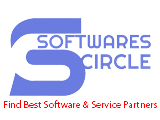iPhone app development involves creating applications that run on Apple’s iOS operating system, specifically designed for iPhones and other iOS devices such as iPads and iPods. It involves designing, developing, testing, and deploying applications that can perform various functions, such as gaming, messaging, productivity, social networking, and entertainment.
To develop iPhone apps, developers need to use specialized tools such as Xcode, Apple’s Integrated Development Environment (IDE), and programming languages such as Swift and Objective-C. They must also follow strict guidelines set by Apple to ensure their app is compatible with the iOS operating system and meets Apple’s quality standards.
The process of developing an iPhone app involves several stages, including conceptualization, planning, design, development, testing, and deployment. Throughout the process, developers must ensure their app is user-friendly, engaging, and functional, and that it delivers an excellent user experience.
Here are some Helpful Tips For Doing iPhone App Development:
Start with a solid idea:
Before starting any app development, it’s essential to have a solid idea of what you want to create. Make sure your idea is unique, marketable, and user-friendly.
Create a detailed plan of your app’s features, functionalities, user interface, and design. Define your app’s target audience and conduct research on their needs and preferences.
Use wireframes and mockups:
Create wireframes and mockups to visualize your app’s design and layout. This helps you refine your app’s features and functionality before you start coding.
Choose the right development tools:
Select the right tools and technologies to develop your app. For iOS app development, you will need to use Xcode, Swift or Objective-C, and Cocoa Touch frameworks.
Focus on user experience:
A great user experience is essential to the success of your app. Ensure your app is user-friendly, intuitive, and easy to navigate.
Connect with SoftwaresCircle and Increase Your Business Online Visibility to Millions of Users
Get ListedTest your app:
Conduct thorough testing throughout the development process to identify and fix any bugs or glitches. Use test-driven development methodologies to ensure the quality of your code.
Use analytics tools to track your app’s usage, user engagement, and retention. This data will help you make informed decisions to improve your app’s performance.
Optimize for performance:
Optimize your app’s performance by minimizing load times, reducing memory usage, and optimizing code. Ensure your app runs smoothly on different devices and iOS versions.
Follow Apple’s guidelines:
Apple has strict guidelines for app development. Ensure you follow these guidelines to avoid rejection from the App Store.
Plan for updates:
Plan for regular updates to improve your app’s functionality and user experience. Consider user feedback when planning updates.
Market your app:
Create a marketing plan to promote your app and increase downloads. Use social media, app reviews, and advertising to reach your target audience.
Seek feedback:
Finally, seek feedback from users to identify areas for improvement. Use this feedback to make necessary changes and updates to your app.
Overall, iPhone app development is a complex and challenging process that requires expertise, creativity, and attention to detail. It is essential to keep up with the latest trends and best practices to develop successful apps that meet the needs of users and add value to their lives.
